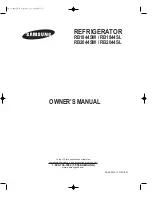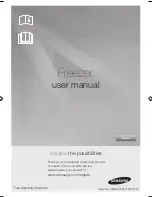
3
Consumer Support
Troubleshooting T
ips
Operating Instructions
Safety Instructions
Installation Instructions
USE OF EXTENSION CORDS
Because of potential safety hazards under certain conditions, we strongly recommend against
the use of an extension cord.
However, if you must use an extension cord, it is absolutely necessary that it be a UL-listed (in the United
States) or a CSA-listed (in Canada), 3-wire grounding type appliance extension cord having a grounding
type plug and outlet and that the electrical rating of the cord be 15 amperes (minimum) and 120 volts.
DANGER! RISK OF CHILD ENTRAPMENT
PROPER DISPOSAL OF THE FREEZER
When using electrical appliances, basic safety precautions should be followed, including the following:
Child entrapment and suffocation are not
problems of the past. Junked or abandoned
refrigerators and freezers are still dangerous…even
if they will sit for “just a few days.” If you are getting
rid of your old refrigerator or freezer, please follow
the instructions below to help prevent accidents.
Before You Throw Away Your Old
Refrigerator or Freezer:
■
Take off the doors.
■
Leave the shelves in place so that children may
not easily climb inside.
CFC Disposal
Your old freezer has a cooling system that used
CFCs (chlorofluorocarbons). CFCs are believed to
harm stratospheric ozone.
If you are throwing away your old freezer, make
sure the CFC refrigerant is removed for proper
disposal by a qualified servicer. If you intentionally
release this CFC refrigerant you can be subject to
fines and imprisonment under provisions of the
Federal Clean Air Act.
www.GEAppliances.com




































